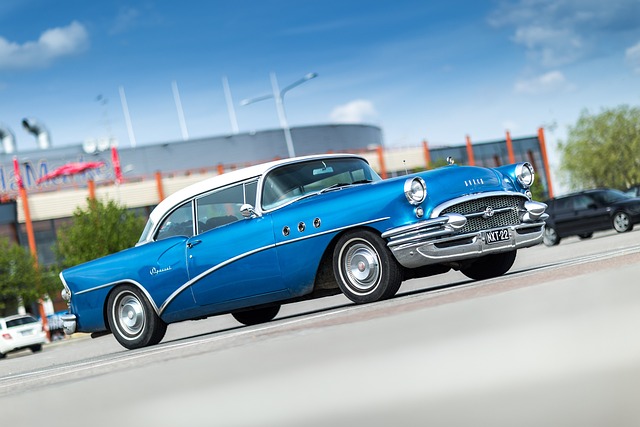Looking to register your car in California? This comprehensive guide walks you through the step-by-step process. From understanding eligibility requirements and gathering essential documents to performing a DMV VIN (Vehicle Identification Number) verification, we’ve got you covered. Learn how to visit a local DMV office or utilize online services, complete the registration, and obtain license plate stickers seamlessly. Ensure a smooth car registration experience in California with these easy-to-follow instructions, including key tips on dmv vin verification.
- Understand Eligibility Requirements for Registration
- Gather Necessary Documents for Car Registration
- Perform DMV Vehicle Identification Number (VIN) Verification
- Visit a California DMV Office or Use Online Services
- Complete Registration and Obtain License Plate Stickers
Understand Eligibility Requirements for Registration

Before you begin the registration process, it’s crucial to understand the eligibility requirements set by the California Department of Motor Vehicles (DMV). To register your vehicle, you must first ensure that your car meets all safety and emissions standards as mandated by the state. This includes a successful DMV vin verification, which involves checking the vehicle identification number (VIN) to confirm its authenticity and history.
Additionally, you’ll need to prove ownership, typically through a bill of sale or previous registration records, and possibly undergo a safety inspection to ensure your car is in compliance with California’s road safety regulations. A mobile vin verifier can be a convenient tool for this step, allowing you to complete the VIN inspection process swiftly and efficiently from the comfort of your location.
Gather Necessary Documents for Car Registration

Before heading to the DMV for car registration, ensure you have all the required documents neatly organized. This process varies slightly depending on whether you’re registering a new or used vehicle, but there are some essential papers that apply universally. For instance, bring along the title or bill of sale from the seller, as proof of ownership is crucial. Additionally, don’t forget your valid driver’s license and any registration fees required.
For used cars, another critical step involves obtaining a Vehicle Identification Number (VIN) verification. This can be done via a mobile VIN verification service, which allows you to check the vehicle’s history digitally from the comfort of your home or on the go. These services provide instant access to detailed reports, including accident and title records, helping to ensure a smooth registration process.
Perform DMV Vehicle Identification Number (VIN) Verification

Before registering your car in California, it’s crucial to perform a DMV Vehicle Identification Number (VIN) Verification. This process ensures that your vehicle’s details match the information on record with the Department of Motor Vehicles (DMV). A simple and convenient way to accomplish this is by utilizing a mobile vin inspection or mobile vin verifier service, which allows you to complete the verification from the comfort of your home or garage.
A mobile vin verification involves a licensed inspector using specialized tools to cross-reference the VIN with the manufacturer’s records and the DMV database. This ensures that the vehicle’s year, make, model, and other critical specifications are accurate. Once the verification is complete, you can proceed with the registration process at your local DMV office or online, making it easier and faster to get your car registered in California.
Visit a California DMV Office or Use Online Services

In California, registering your car involves a straightforward process that can be completed at a local DMV office or through online services. If you prefer face-to-face interaction, visiting a California DMV office is an option. Bring all necessary documents, including proof of ownership, identification, and vehicle registration history from any previous state. A key step in the process, especially for ensuring accuracy, is the DMV VIN verification. This involves checking the vehicle’s unique identifier to confirm its authenticity and specifications.
For a more convenient approach, California offers online services that allow you to register your car remotely. You can initiate the registration process on the official DMV website, providing details about your vehicle and submitting required documents digitally. Some platforms even provide mobile VIN verification options, allowing you to validate your vehicle’s information from the comfort of your home or on the go with a vin inspection. This modern alternative streamlines the traditional process, making car registration in California more accessible than ever.
Complete Registration and Obtain License Plate Stickers

After successfully passing the smog test, the next step is to complete your vehicle’s registration at the California Department of Motor Vehicles (DMV). This involves filling out the necessary forms and providing essential documents. One crucial part of this process is the DMV VIN verification, where they’ll cross-check your vehicle’s unique identification number against their records to ensure it matches the details on file. Once verified, you’ll receive a registration certificate and license plate stickers.
Obtaining these stickers is a vital step in making your car legally compliant for California roads. The process typically involves an online or in-person application, depending on your preference. If you opt for a mobile vin inspection or use a mobile vin verifier, this stage can be even more convenient, allowing you to complete the registration from the comfort of your own home. Ensure all details are accurate and up to date, as any discrepancies may delay the process.
Registering a car in California involves understanding eligibility requirements, gathering essential documents, and successfully completing a DMV VIN verification. By following these straightforward steps, including visiting a local DMV office or utilizing online services, you can ensure your vehicle’s compliance with state regulations. Remember to keep your registration up-to-date and obtain license plate stickers as required for legal and safe operation on California roads.



